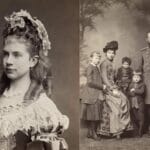While often remembered as the husband of mystery novelist Agatha Christie, Max Mallowan was a prominent archaeologist whose work significantly advanced our understanding of the ancient Near East. This article delves into his remarkable life, exploring his impactful career, his marriage to Christie, and his lasting contributions to archaeology.
From Classics to the Cradle of Civilization: Mallowan’s Early Life
Born Max Edgar Lucien Mallowan in 1904 in Wandsworth, London, his early life hinted at a traditional academic path. Educated at Rokeby School, Lancing College, and New College, Oxford, where he focused on Classics, Mallowan might have seemed destined for a life immersed in Greek and Roman texts. However, influential mentors like historian H.A.L. Fisher saw a different potential. Fisher’s introductions to archaeological luminaries like D.G. Hogarth and Leonard Woolley ignited in young Mallowan a passion for the mysteries of the ancient Near East — the very cradle of civilization. This pivotal moment redirected his scholarly trajectory from the familiar world of Greco-Roman studies towards the less-charted territories of Mesopotamia, a region brimming with ancient empires and untold stories. [https://www.lolaapp.com/marian-ilitch]
A Formative Apprenticeship: Ur and the Influence of Woolley
Mallowan’s apprenticeship under Leonard Woolley at the famed site of Ur proved transformative. From 1925 to 1930, amidst the dust and remnants of a civilization millennia old, he honed his skills under Woolley’s guidance. He learned the meticulous techniques of excavation, the patient sifting through layers of history, and the art of interpreting the whispers of the past. Woolley’s influence likely shaped not only Mallowan’s methodology, but also his deep respect for the cultures he sought to uncover. This experience at Ur, sponsored by the British Museum and the University of Pennsylvania, provided the bedrock for his future archaeological endeavors.
A Career of Excavations: Unraveling Mesopotamian History
The 1930s marked the beginning of Mallowan’s own archaeological expeditions. He led digs at sites that would become cornerstones of Mesopotamian history: Tell Arpachiyah, offering insights into prehistoric northern Mesopotamian culture; Chagar Bazar, where he unearthed an Early Dynastic administrative complex, revealing details of governance and trade; and Tell Brak, a Syrian archaeological site crucial for understanding early Mesopotamian urban development. Each carefully excavated artifact added a piece to the complex puzzle of ancient life.
Nimrud: A Legacy in Ivory and Stone
Perhaps his most renowned excavation was at Nimrud, the ancient Assyrian capital, from 1949 to 1963. Here, Mallowan unearthed magnificent palaces of powerful kings, adorned with exquisite ivory carvings that testified to a rich and sophisticated artistic tradition. The scale of the discoveries at Nimrud, the grandeur of the architecture, and the intricate beauty of the artifacts solidified his place among the leading archaeologists of his time. These ivories, potentially representing the pinnacle of Assyrian craftsmanship, showcased the empire’s wealth and sophistication, continuing to fascinate scholars today. Further research is ongoing to fully contextualize and understand these remarkable finds.
To summarize his key excavations:
| Excavation Site | Dates | Significance |
|---|---|---|
| Tell Arpachiyah | 1933-1937 | Prehistoric Northern Mesopotamian Culture |
| Chagar Bazar | 1935-1937 | Early Dynastic administrative complex; insights into governance and trade |
| Tell Brak | 1937-1938 | Key site for understanding early Mesopotamian urban centers |
| Nimrud | 1949-1963 | Assyrian palaces and significant ivory carvings |
Beyond the Trenches: Scholarship and a Knighthood
Mallowan’s contributions extended far beyond fieldwork. He wasn’t just interested in finding artifacts; he was driven to understand them. He meticulously documented his findings in numerous books and articles, contributing significantly to the Ur Excavation series and furthering the understanding of Mesopotamian archaeology. He also held a prestigious professorship of Western Asiatic Archaeology at the University of London from 1947 to 1961, shaping the next generation of archaeologists. His memoir, Mallowan’s Memoirs, offers a personal and captivating account of his life and career, including his wartime service in Air Force intelligence during World War II. In 1968, Mallowan received a knighthood, a testament to his significant contributions to archaeology and the broader understanding of human history. [https://www.lolaapp.com/melvin-belli-attorney]
A Partnership of Archaeology and Literature: Max and Agatha
Mallowan’s life intertwined with literature through his marriage to Agatha Christie. Their 1930 marriage, following a 1928 meeting in Baghdad, wasn’t just a personal union; it was a fusion of two creative worlds. Christie often accompanied Mallowan on his excavations, drawing inspiration from the landscapes and cultures of the Middle East for her novels. Works like Murder in Mesopotamia and Death on the Nile are infused with the atmosphere of their shared experiences. While the extent of influence is debated, it’s likely their partnership enriched both their lives and work, with Mallowan finding a supportive partner who understood his passion, and Christie gaining a world of inspiration.
Later Years, Remarriage, and Legacy
After a long and fulfilling career, Mallowan passed away in 1978 at Greenway House. Following Agatha Christie’s death in 1976, he married Barbara Hastings Parker, a fellow archaeologist and his epigraphist at Nimrud, in 1977. This second marriage, though brief, highlights his continued engagement with archaeology and suggests a deep intellectual connection with Parker. He is buried beside Agatha Christie. While Mallowan had no biological children, he was stepfather to Christie’s daughter, Rosalind Hicks.
Max Mallowan’s legacy extends far beyond his connection to Agatha Christie. He was a pioneering archaeologist whose meticulous work fundamentally shaped our understanding of ancient Mesopotamian civilization. His excavations, insightful interpretations, and dedication to scholarship continue to inspire and inform. He reminds us that archaeology isn’t just about digging up the past; it’s about bringing it to life, connecting us to the rich tapestry of human history.
- Unveiling Bernhard Caesar Einstein’s Scientific Achievements: A Legacy in Engineering - July 15, 2025
- Uncover who is Jerry McSorley: CEO, Family Man, Business Success Story - July 15, 2025
- Discover Bernhard Caesar Einstein’s Scientific Contributions: Unveiling a Legacy Beyond Einstein - July 15, 2025














